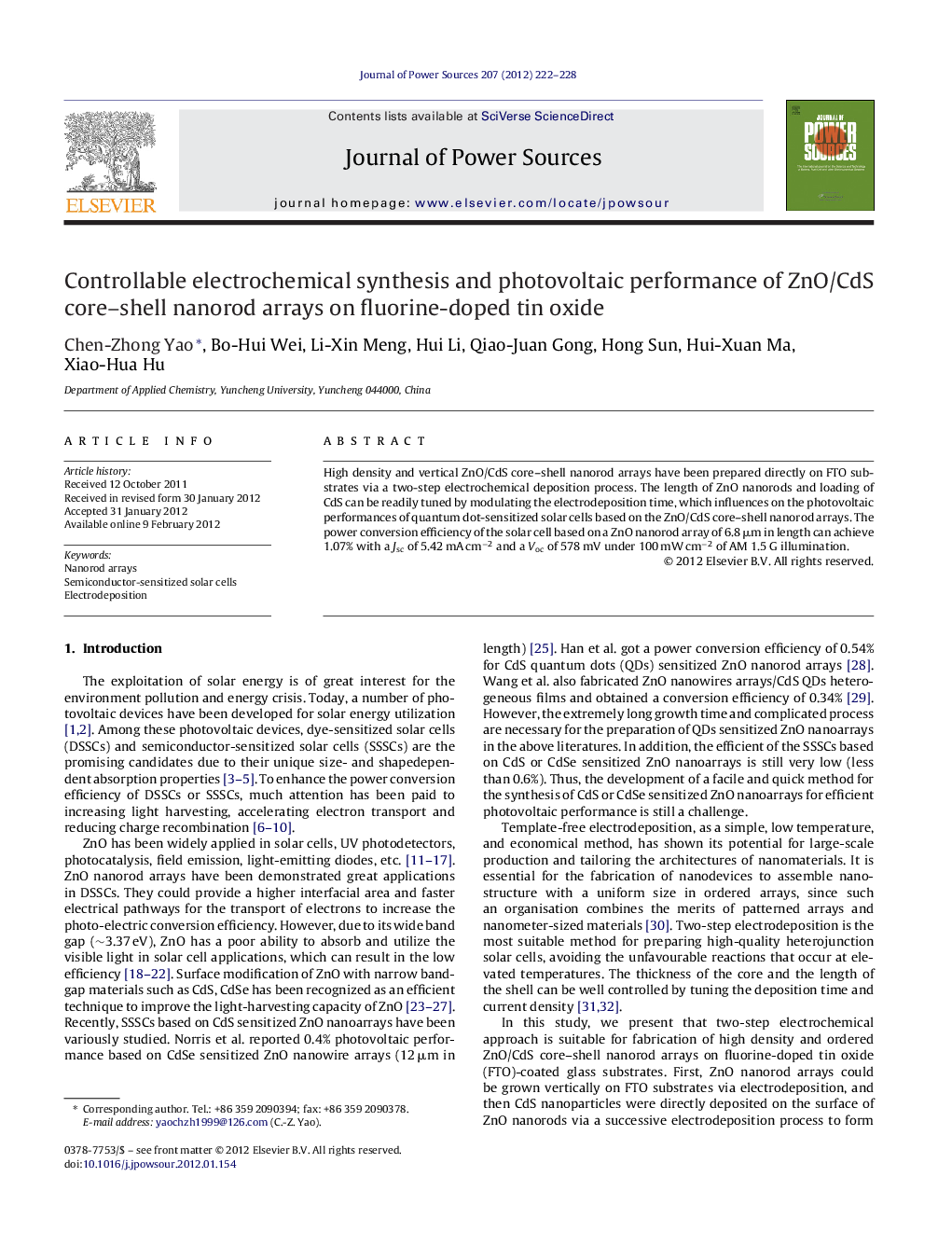| Article ID | Journal | Published Year | Pages | File Type |
|---|---|---|---|---|
| 1293042 | Journal of Power Sources | 2012 | 7 Pages |
High density and vertical ZnO/CdS core–shell nanorod arrays have been prepared directly on FTO substrates via a two-step electrochemical deposition process. The length of ZnO nanorods and loading of CdS can be readily tuned by modulating the electrodeposition time, which influences on the photovoltaic performances of quantum dot-sensitized solar cells based on the ZnO/CdS core–shell nanorod arrays. The power conversion efficiency of the solar cell based on a ZnO nanorod array of 6.8 μm in length can achieve 1.07% with a Jsc of 5.42 mA cm−2 and a Voc of 578 mV under 100 mW cm−2 of AM 1.5 G illumination.
Graphical abstractFigure optionsDownload full-size imageDownload as PowerPoint slideHighlights► Ordered ZnO/CdS core-shell nanorod arrays were fabricated by a facile two-step electrochemical approach on fluorine-doped tin oxide (FTO)-coated glass substrates. ► ZnO/CdS core-shell nanorod arrays can be used as photoanode for the solar cell application, exhibiting 1.07% power conversion efficiency under 100 mW cm−2 of AM 1.5 G illumination. ► Different electrodeposition time have an influence on the loading of CdS, length of ZnO nanorods, optical properties and photovoltaic performance of ZnO/CdS core-shell nanorod arrays.
